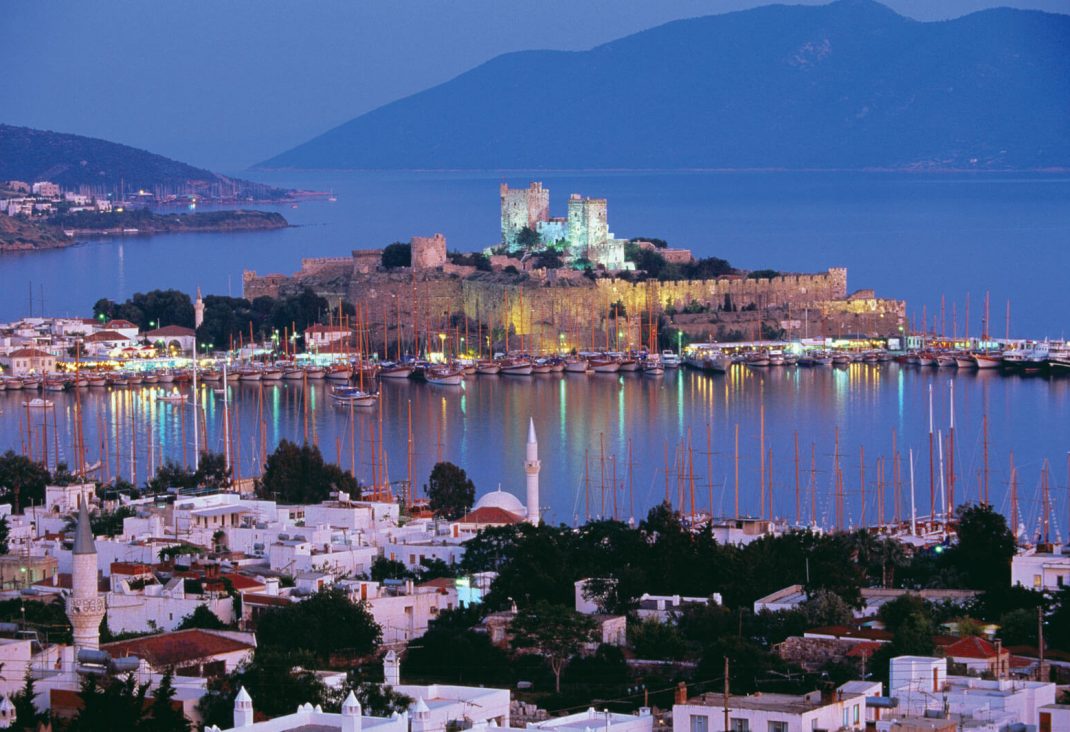CHRISTIANITY AND THE BYZANTINE EMPIRE (AD 36-1000)
In AD 36, St. Paul the Apostle traveled through Asia Minor, spreading Christianity and establishing the seven Churches of Revelation. From Antioch, through Cappadocia, and into Greece, he converted Gentiles while raising the ire of local Jews and pagans. Persecution only lessened in 251, with the third century, following the conversions of the first king, Abgar of Edessa (now Şanlıurfa), and of Gregory the Illuminator in Armenia in 310. In the meantime, the central authority of the Roman Empire was collapsing under the weight of economic tumult and northern invasions, producing a messy civil war. Out of the scramble, Constantine emerged in 324 as the sole ruler and became Rome’s first Christian Emperor, founding his capital on the old city of Byzantium at the mouth of the Bosphorus. Constantine’s successors, however, could not preserve the unity of the empire. In 395 Theodosius partitioned the empire into Hellenistic east and Latin west. Rome was sacked by the Goths in 410, and the Western Empire collapsed in 476.
You can see Byzantine City Walls by joining our Bosphorus Cruise and Cable Car tour.
Things were different in the east, where the Byzantine Empire dominated for the next 600 years. Constantinople remained secure behind its fortifications built by Theodosius II, which can still be seen in modem Istanbul (Yedikule). Mass conversion to Christianity created an imperial ideology of universalism and a proliferation of evangelical missions and monasteries. The emperor, the Church, taxation, and the Greek language bound together a cosmopolitan Byzantine culture of Greeks, Syriacs, Egyptian Copts, Armenians, and Slavs.
Between the 4th and 7th centuries, Seven Ecumenical Councils established the structure and clarified Church doctrine. The Council of Nicaea in 325 (İznik) and the Council of Constantinople in 381 appointed the emperor as the head of both Church and State, exempted the clergy from taxation, and organized the Church into five patriarchates Rome, Constantinople, Alexandria, Antioch, and Jerusalem. Each was headed by a patriarch, who performed religious duties and functioned as a sort of local governor. The early years of the Church were filled with doctrinal debate, heresy, and name- calling. Debates between Arlans, who believed Christ was subordinate to God, and the Monophysites, who emphasized the single divine nature of Christ, challenged official church doctrine and prompted the Nicene Creed, a summation of Church doctrine of the Trinity, which ruled that Jesus was simultaneously human and divine.
This religious dispute caused immense turmoil between the imperial seat in Constantinople and the empire’s Monophysite southern and eastern territories. Indeed, it was the persecuted Monophysite provinces of Egypt and Syria that first welcomed Islam during the Middle Byzantine period (610-1081). Disastrous defeats at the hands of the rapidly expanding Arab Umayyad dynasty (661-750) led to Iconociasm: a Byzantine belief that their own icons were idolatrous and that defeat was divine punishment. For sixty years starting in 726, all holy images were demolished by imperial order. To the relief of aesthetes, this order was rescinded in 787. Unfortunately, the damage was done; many Byzantine treasures were gone forever, and the empire’s three-century decline had begun. Civil wars, as well as those with Slav and Arab neighbors, slowly weakened the empire. At the same time, the isolated patriarchate of Rome began to claim primacy over the other four, leading to doctrinal disputes that culminated in the Great Schism between the Orthodox and Roman Catholic churches in 1054.
More resources: Byzantine Empire by Wikipedia and Ancient History – Byzantine Empire by History.com



Leave a Reply